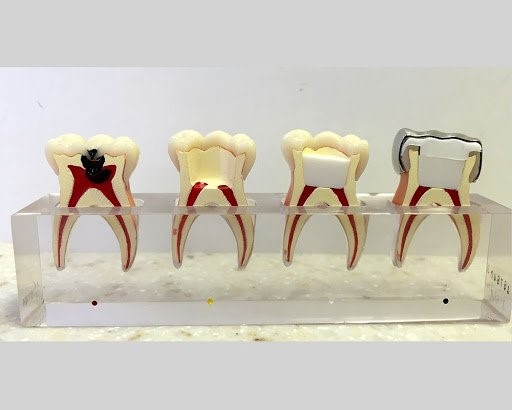“PULP THERAPY IN PEDIATRIC DENTISTRY”
Pulp Therapy in pediatric dentistry:
Pulp therapy, also known as root canal therapy for primary teeth, is a dental procedure designed to treat and preserve the health of the dental pulp—the innermost layer of the tooth containing nerves, blood vessels, and connective tissue. When the pulp becomes inflamed or infected due to deep decay, trauma, or other factors, it can lead to pain, abscess formation, and even premature tooth loss if left untreated. Pulp therapy steps in as a vital solution to salvage affected teeth, thereby preventing further complications and maintaining the natural dentition.
Significance of Pulp Therapy in Pediatric Dentistry:
The significance of pulp therapy in pediatric dentistry cannot be overstated. Unlike adults, children's teeth are still developing, making them more susceptible to damage and infection. Losing primary teeth prematurely can disrupt the proper alignment of permanent teeth, leading to orthodontic issues in the future. By preserving the vitality of primary teeth through pulp therapy, pediatric dentists help support normal dental development and function, paving the way for a healthy smile that lasts a lifetime.
What are the signs of damaged dental pulp?
Generally, the best indication that the pulp has been damaged or exposed is pain. Your child may Indicate general pain in their mouth, or a specific tooth that hurts. They may also complain of jaw ache, headache, or inflamed and sensitive gums. Sensitivity to heat or cold on the tooth is also a sign of potential pulp damage.
Other signs include,
• Difficulty sleeping due to pain
• Sensitivity to hot and/or cold foods/beverages
• Swelling, redness or sensitivity of the gums
Pulp Therapy:
Pulp therapy typically involves two procedures – Pulpotomy (or)
Pulpectomy Pulpotomy:
In cases where the pulp is partially affected, a pulpotomy may be performed. During this procedure, the infected portion of the pulp is removed, and a medicated dressing is placed to promote healing and prevent further infection.

Pulpectomy:
If the entire pulp is affected, a pulpectomy is necessary. This involves complete removal of the infected pulp tissue from the tooth's pulp chamber and root canals, followed by thorough cleaning and disinfection.

Conclusion:
In conclusion, pulp therapy emerges as a cornerstone of pediatric dentistry, offering a lifeline to children grappling with dental pulp infections. By preserving the integrity of primary teeth through timely.
